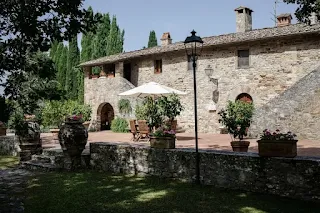A Tribute to Vernaccia di San Gimignano
Every year, wine lovers and industry professionals gather in the medieval town of San Gimignano for the Vernaccia di San Gimignano Wine Festival, also known as Regina Ribelle. This prestigious event celebrates one of Italy’s most historic white wines, Vernaccia di San Gimignano, renowned for its crisp minerality and elegant aromas.
When and Where
The festival is in the heart of San Gimignano, famous for its medieval towers and breathtaking landscapes. The 2025 edition is scheduled for May 17-18, offering two days of tastings, masterclasses, and cultural experiences in a truly unique setting.
Wine Tastings and Masterclasses
Visitors can taste a wide selection of Vernaccia di San Gimignano wines, guided by expert sommeliers and local producers. From fresh and young expressions to aged Riserva versions, the festival showcases the full spectrum of this exceptional white wine. Masterclasses dive deeper into the nuances of Vernaccia, exploring its terroir, production techniques, and perfect food pairings.
The Best AIS Sommelier of Tuscany Competition
One of the festival’s highlights is the prestigious Best AIS Sommelier of Tuscany competition, where top sommeliers from across the region compete for the title. This exciting event offers a chance to witness the expertise and passion of Italy’s finest wine professionals.
A Unique Cultural and Gastronomic Experience
Beyond wine tastings, the festival features local food pairings, entertainment, and music, creating a vibrant atmosphere in San Gimignano’s historic center. Guests can enjoy Tuscan delicacies that perfectly complement Vernaccia wines, while the Rocca di Montestaffoli hosts cultural performances, interactive exhibits, and a DJ set to close the celebrations.
The Vernaccia di San Gimignano Wine Experience
For those eager to deepen their knowledge, the Vernaccia di San Gimignano Wine Experience at Rocca di Montestaffoli offers an immersive journey through the history and production of this iconic wine. This interactive space allows visitors to engage with multimedia displays, taste a variety of wines, and appreciate the evolution of Vernaccia over time.
Why You Should Attend
The Vernaccia di San Gimignano Wine Festival is more than just a tasting event—it’s an opportunity to connect with local winemakers, explore Tuscany’s winemaking traditions, and experience the charm of San Gimignano. Whether you’re a seasoned wine connoisseur or simply looking for an unforgettable weekend in Tuscany, this festival is a must-visit.
Mark your calendar for May 18-19, 2024, and immerse yourself in Vernaccia di San Gimignano! 🍷✨












